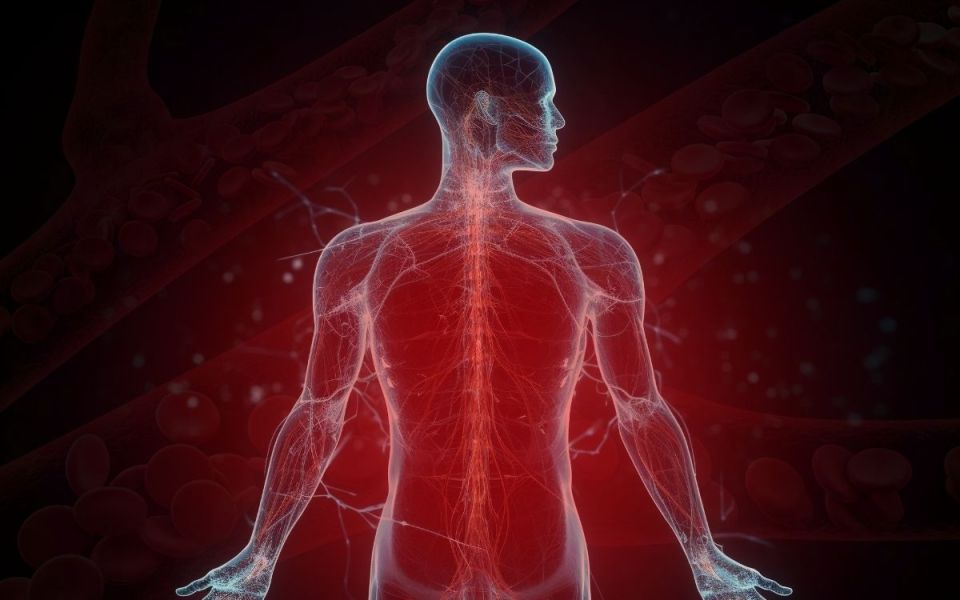Can an Inflammation Blood Test Detect Heart Disease Early?

Last time I went to my doctor, I had to get blood drawn for some lab work. Phlebotomists took some blood, sent it off to wherever it goes, and a day or so later I learned that all my numbers were in the "normal range”. This simple, relatively easy process belies some of the amazing research and technology behind “lab work.” Let’s focus on one test, high-sensitivity C-reactive protein (hs-CRP), as an example. An hs-CRP test costs a consumer around $60 and is sold as an inflammation test which may predict heart disease. Under the hood, though, investigations into hs-CRP began in the 1930s and are still undergoing intense scrutiny for its predictive value for measuring heart disease. Let’s dig into this biomarker and what it might be able to tell us about our cardiovascular system.
High-sensitivity C-reactive protein is a nonspecific inflammation marker. Nonspecific here means that it rises in response to many different causes of inflammation. Acute (sudden and short-term) inflammation causes include tissue injury, bacterial infections, and burns. Chronic (long-lasting) conditions that may raise hs-CRP include:
- Pregnancy
- Obesity
- Insulin resistance
- Smoking
- Age
- Depression
- Hormone therapy
- Cardiovascular disease
- Alcohol
Immediately, the potential to predict cardiovascular disease is apparent. Many of these conditions take a long time to develop, and most of them will lead to serious cardiac problems given enough time. Getting an early warning could be critical to determine risks and start treatment. Because of this potential, researchers have been investigating hs-CRP for its ability to predict cardiovascular risks, including heart attack, stroke, coronary artery disease, and sudden cardiac death. Hs-CRP values fluctuate and can be affected by acute changes, but investigators have found that high levels of hs-CRP, above 2 or 3 mg/L, are associated with increased cardiovascular risk.
So, how does hs-CRP predict cardiac problems? High-sensitivity C-reactive protein binds to bacteria and dying cells and activates our immune system. It recruits the complement pathway (part of our innate immune system), enhances coagulation and blood clotting, and facilitates the release of inflammatory cytokines. During an infection or tissue injury, these are great features, but when chronic conditions keep inflammation high for a long time the body (including the cardiovascular system) suffers. Some evidence indicates that hs-CRP may promote blood clots around ruptured cholesterol plaques in the bloodstream, but there is actually significant debate on how much of a role it plays in causing cardiovascular disease and how much it just indicates it. Regardless of blame, what can be done for people with high levels?
In people with high hsCRPlevels, reducing inflammation has multiple positive effects on the cardiovascular system. Weight loss, a good diet, and exercising significantly affect hs-CRP levels. Exercising more than once a week is associated with a 23-37% reduction in hs-CRP levels, compared with exercising less than once a week. Smoking is a huge indicator of heart disease and hs-CRP levels. Smokers are 70% more likely to have high levels, though this risk drops to 20% in former smokers. A physician may recommend low-dose aspirin to help lower inflammation and prevent heart attack and stroke. Using hs-CRP as an early indicator of heart disease risk has also led to exciting clinical research studies. The JUPITER study enrolled 17,000+ healthy patients with high hs-CRP levels (but normal cholesterol) and preventatively prescribed statins, a cholesterol lowering medication. This double-blind, placebo-controlled study found that those with the early statins had significantly lower levels of cardiovascular disease and death. Other studies, including the 10,000+ patient CANTOS study, have looked at targeting the inflammation that leads to high hs-CRP levels, though we aren’t at a solution yet. Clinical research is ongoing in this active field, and there may be research opportunities available to study hs-CRP. Contact your local research site to see what studies you can participate in.
So next time you get “blood work,” take a minute to appreciate the hard work, effort, and amazing science behind the test results.
Staff Writer / Editor Benton Lowey-Ball, BS, BFA
Click Below for ENCORE Research Group's Enrolling Studies
References:
Bassuk, S. S., Rifai, N., & Ridker, P. M. (2004). High-sensitivity C-reactive protein: clinical importance. Current problems in cardiology, 29(8), 439-493.
Bray, C., Bell, L. N., Liang, H., Haykal, R., Kaiksow, F., Mazza, J. J., & Yale, S. H. (2016). Erythrocyte sedimentation rate and C-reactive protein measurements and their relevance in clinical medicine. Wmj, 115(6), 317-21.
Labcorp. (n.d.). Inflammation (hs-CRP) test. Labcorp OnDemand, [Website]. Accessed 14 October, 2024. https://www.ondemand.labcorp.com/lab-tests/inflammation-hs-crp-test
Mojca, S. (2003). Atherothrombosis: Pathogenesis of Cardiovascular Disease. EJIFCC, 14(2), 47. https://www.ncbi.nlm.nih.gov/pmc/articles/PMC6169144/
Ridker, P. M. (2016). A test in context: high-sensitivity C-reactive protein. Journal of the American College of Cardiology, 67(6), 712-723. https://www.jacc.org/doi/full/10.1016/j.jacc.2015.11.037
Ridker, P. M., Danielson, E., Fonseca, F. A., Genest, J., Gotto Jr, A. M., Kastelein, J. J., ... & Glynn, R. J. (2008). Rosuvastatin to prevent vascular events in men and women with elevated C-reactive protein. New England journal of medicine, 359(21), 2195-2207. https://www.nejm.org/doi/full/10.1056/NEJMoa0807646
Ridker, P. M., Rifai, N., Clearfield, M., Downs, J. R., Weis, S. E., Miles, J. S., & Gotto Jr, A. M. (2001). Measurement of C-reactive protein for the targeting of statin therapy in the primary prevention of acute coronary events. New England Journal of Medicine, 344(26), 1959-1965. https://www.nejm.org/doi/full/10.1056/NEJM200106283442601
Sproston, N. R., & Ashworth, J. J. (2018). Role of C-reactive protein at sites of inflammation and infection. Frontiers in immunology, 9, 754. https://www.ncbi.nlm.nih.gov/pmc/articles/PMC5908901/
Thompson, D., Pepys, M. B., & Wood, S. P. (1999). The physiological structure of human C-reactive protein and its complex with phosphocholine. Structure, 7(2), 169-177. https://www.cell.com/structure/fulltext/S0969-2126(99)80023-9



